BMW iX1 vs Kia EV3 – Differences & prices compared
Compare performance, boot space, consumption and price in one view.
Find out now: which car is the better choice for you – BMW iX1 or Kia EV3?
The BMW iX1 (SUV) comes with a Electric engine and Automatic transmission. In comparison, the Kia EV3 (SUV) features a Electric engine with Automatic transmission.
When it comes to boot capacity, the BMW iX1 offers 490 L, while the Kia EV3 provides 460 L – depending on how much space you need. If you’re looking for more power, decide whether the 313 HP of the BMW iX1 or the 204 HP of the Kia EV3 suits your needs better.
In terms of consumption, the values are 15.80 kWh per 100 km for the BMW iX1, and 14.90 kWh for the Kia EV3.
Price-wise, the BMW iX1 starts at 41800 £, while the Kia EV3 is available from 30800 £. Compare all the details and find out which model fits your lifestyle best!
In the burgeoning electric SUV market, the BMW iX1 and Kia EV3 stand out with their unique blend of style and technology. The iX1 delivers a premium driving experience with its luxurious interior and advanced driving dynamics, while the Kia EV3 impresses with its practicality and range, making it a strong contender for family-oriented buyers. Both vehicles offer impressive features, but the choice ultimately depends on whether consumers prioritize luxury or value for their electrified adventures.
BMW iX1
The BMW iX1 stands out as a versatile addition to the electric vehicle market, seamlessly combining compact dimensions with advanced electric technology. Its sophisticated design elements and premium interiors ensure a luxurious driving experience, while the vehicle's performance focuses on delivering both efficiency and agility. With enhanced connectivity features and an emphasis on sustainability, this model represents a significant step forward in BMW's commitment to a greener future.
details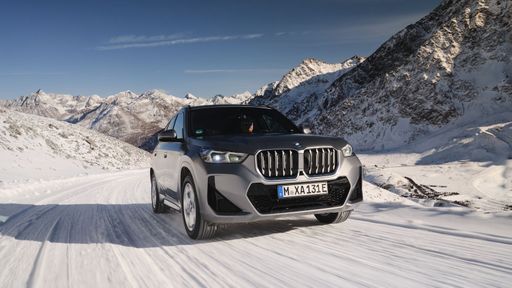 @ press.bmwgroup.com
@ press.bmwgroup.com
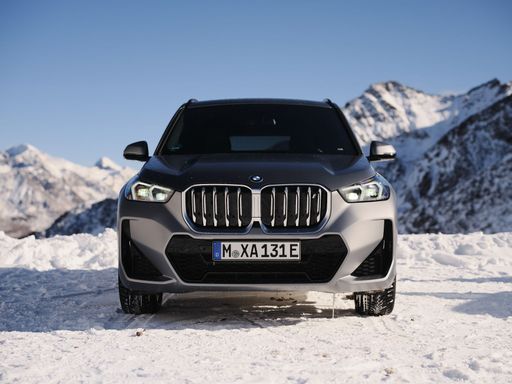 @ press.bmwgroup.com
@ press.bmwgroup.com
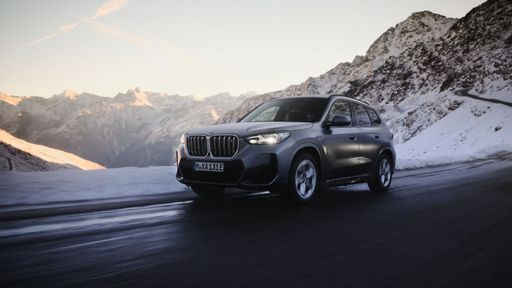 @ press.bmwgroup.com
@ press.bmwgroup.com
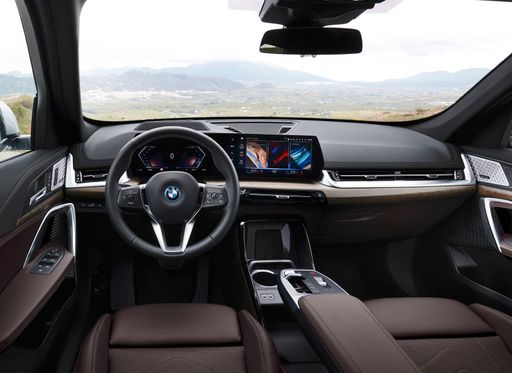 @ press.bmwgroup.com
@ press.bmwgroup.com
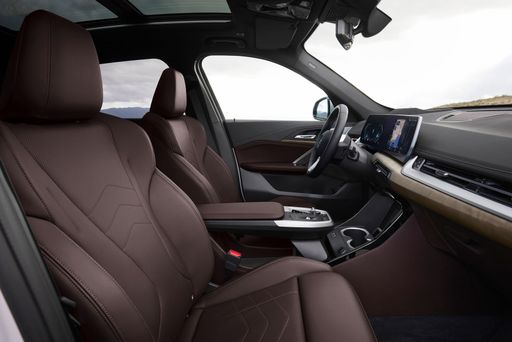 @ press.bmwgroup.com
@ press.bmwgroup.com
Kia EV3
The Kia EV3 is a testament to innovative design and sustainable driving, featuring a sleek exterior that melds form with function. Inside, the cabin offers a harmonious blend of modern technology and comfort, making every journey enjoyable for both driver and passengers. With its impressive range and eco-friendly credentials, the EV3 positions itself as a competitive player in the evolving landscape of electric vehicles.
details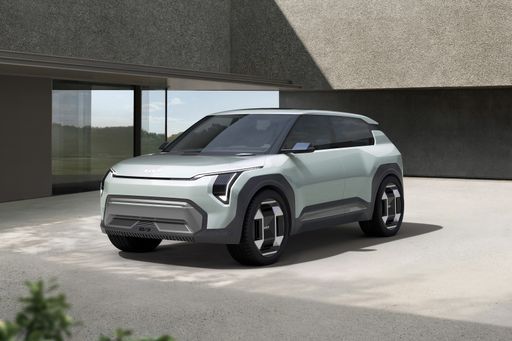 @ kiamedia.com
@ kiamedia.com
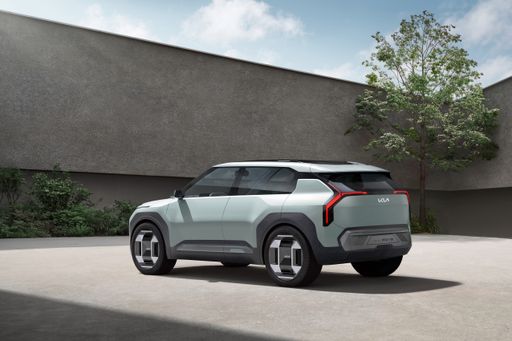 @ kiamedia.com
@ kiamedia.com
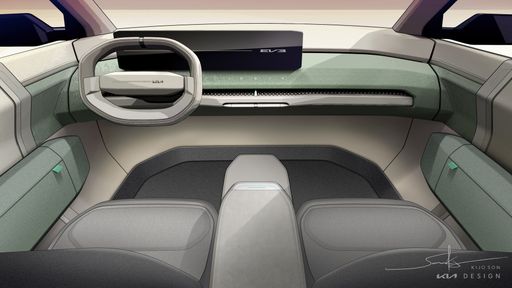 @ kiamedia.com
@ kiamedia.com
The electric vehicle market is more competitive than ever, and two of the latest offerings vying for attention are the BMW iX1 and the Kia EV3. Both models are positioned as stylish and modern SUVs designed for the eco-conscious driver, leading to an interesting comparison in terms of technical aspects and innovations.
Overview of the BMW iX1
The BMW iX1 embodies the luxury and performance that the brand is known for, combined with electric efficiency. This compact SUV is available in both front-wheel drive (FWD) and all-wheel drive (AWD) configurations, providing options for different driving preferences. With a power output of up to 313 HP and a torque of 494 Nm, the iX1 can accelerate from 0-100 km/h in a brisk 5.6 seconds.
Specifications and Performance
In terms of electrical efficiency, the iX1 consumes 15.8 to 17.1 kWh per 100 km and boasts an electric range of 436 to 463 km, depending on the variant. It features a battery capacity of 64.8 kWh and has a maximum speed limited to 170 km/h. With a trunk capacity of 490 liters and a curb weight of 1940 kg, the iX1 offers ample space while maintaining solid performance metrics.
Interior and Technology
The interior of the iX1 is filled with high-quality materials and cutting-edge technology. Innovations such as a custom infotainment system with a large digital display, advanced driver-assistance features, and premium sound systems elevate the driving experience. With room for five passengers, the focus on comfort and technology makes long journeys enjoyable.
Exploring the Kia EV3
On the other side, we have the Kia EV3, a newcomer that aims at blending practicality with innovation. The EV3 comes in a front-wheel drive setup with a maximum power output of 204 HP and a torque of 283 Nm, allowing it to reach 0-100 km/h in around 7.5 to 7.9 seconds, which is respectable for its class.
Specifications and Performance
The EV3 is noted for its efficiency, featuring a consumption rate of 14.9 to 16.2 kWh per 100 km. Its battery options range from 58.3 kWh to 81.4 kWh, giving an impressive electric range of up to 605 km for the larger battery option. Despite its lighter curb weight (1800-1885 kg), the EV3 maintains similar max speed capabilities with a limit set at 170 km/h. Its trunk capacity of 460 liters provides ample room for storage, catering to family needs.
Interior and Technology
The Kia EV3 doesn't fall short in terms of technology and comfort either. The cabin features a straightforward layout with an emphasis on user-friendly technology, infotainment systems, and safety features. There is generous space for five passengers, ensuring that comfort remains a priority even on longer journeys.
Innovative Features
Both vehicles are equipped with innovative safety technologies and driving assistance features that enhance the driving experience. The iX1 boasts BMW's suite of driver-assistance systems, while the EV3 includes an array of smart safety features aimed at simplifying urban driving and enhancing overall safety.
Conclusion
When comparing the BMW iX1 and the Kia EV3, it becomes evident that both models are strong contenders in the electric SUV market. The iX1 leans towards luxury and performance, while the EV3 emphasizes efficiency and practicality. Ultimately, the choice will depend on consumer preferences: those looking for a premium experience may gravitate towards the iX1, whereas buyers focused on value and efficiency might find the Kia EV3 more appealing. As the electric vehicle segment continues to grow, both models stand as strong representations of their respective brands.

|

|
|
|
|
Costs and Consumption |
|
|---|---|
|
Price
41800 - 54600 £
|
Price
30800 - 41700 £
|
|
Consumption L/100km
-
|
Consumption L/100km
-
|
|
Consumption kWh/100km
15.8 - 17.1 kWh
|
Consumption kWh/100km
14.9 - 16.2 kWh
|
|
Electric Range
436 - 463 km
|
Electric Range
436 - 605 km
|
|
Battery Capacity
64.80 kWh
|
Battery Capacity
58.3 - 81.4 kWh
|
|
co2
0 g/km
|
co2
0 g/km
|
|
Fuel tank capacity
-
|
Fuel tank capacity
-
|
Dimensions and Body |
|
|---|---|
|
Body Type
SUV
|
Body Type
SUV
|
|
Seats
5
|
Seats
5
|
|
Doors
5
|
Doors
5
|
|
Curb weight
1940 - 2085 kg
|
Curb weight
1800 - 1885 kg
|
|
Trunk capacity
490 L
|
Trunk capacity
460 L
|
|
Length
4500 mm
|
Length
4300 - 4310 mm
|
|
Width
1845 mm
|
Width
1850 mm
|
|
Height
1616 mm
|
Height
1560 - 1570 mm
|
|
Payload
495 kg
|
Payload
470 kg
|
Engine and Performance |
|
|---|---|
|
Engine Type
Electric
|
Engine Type
Electric
|
|
Transmission
Automatic
|
Transmission
Automatic
|
|
Transmission Detail
Reduction Gearbox
|
Transmission Detail
-
|
|
Drive Type
Front-Wheel Drive, All-Wheel Drive
|
Drive Type
Front-Wheel Drive
|
|
Power HP
204 - 313 HP
|
Power HP
204 HP
|
|
Acceleration 0-100km/h
5.6 - 8.6 s
|
Acceleration 0-100km/h
7.5 - 7.9 s
|
|
Max Speed
170 - 180 km/h
|
Max Speed
170 km/h
|
|
Torque
250 - 494 Nm
|
Torque
283 Nm
|
|
Number of Cylinders
-
|
Number of Cylinders
-
|
|
Power kW
150 - 230 kW
|
Power kW
150 kW
|
|
Engine capacity
-
|
Engine capacity
-
|
General |
|
|---|---|
|
Model Year
2022 - 2023
|
Model Year
2024
|
|
CO2 Efficiency Class
A
|
CO2 Efficiency Class
A
|
|
Brand
BMW
|
Brand
Kia
|
BMW iX1
A New Era of Innovation: Meet the BMW iX1
The automotive world has seen a seismic shift towards sustainability and electrification, and BMW has solidified its place in this evolution with the introduction of the BMW iX1. As a fully electric SUV, the iX1 serves as a testament to how luxury, performance, and eco-consciousness can harmoniously blend in the modern automotive landscape.
Exquisite Design Meets Purposeful Engineering
The BMW iX1 is not just an electric vehicle; it's an embodiment of cutting-edge design and technology. With its bold SUV silhouette, the iX1 boasts dimensions of 4500 mm in length, 1845 mm in width, and 1616 mm in height, providing a spacious yet agile presence on the road. Its dynamic aesthetic is complemented by an aerodynamic form that enhances efficiency, offering a drag coefficient that rivals traditional SUV models.
Powertrain and Performance Specifications
Beneath the hood of the BMW iX1 lays an electric motor that signifies the future of automotive engineering. Available variants offer power outputs ranging from 204 to 313 PS (150 to 230 kW). The iX1 comes with either a front-wheel or all-wheel drivetrain, catering to different driving preferences. The xDrive30 variant, in particular, features all-wheel drive, delivering up to 313 PS for those who crave enhanced traction and control.
With a commendable electric consumption of 15.8 to 17.1 kWh per 100 km, the iX1 strikes a fine balance between power and efficiency. Its acceleration stats are equally impressive, with the ability to go from 0-100 km/h in as little as 5.6 seconds. This ensures that while it's eco-friendly, it does not compromise on the exhilaration factor. The vehicle can reach a top speed range between 170 and 180 km/h.
A Journey Without Interruptions: Range and Battery Life
The iX1's battery, boasting a capacity of 64.8 kWh, provides a substantial driving range of 436 to 463 km on a single charge, depending on the variant. This means long road trips are not only feasible but enjoyable, eliminating the range anxiety often associated with electric vehicles.
Comfort and Technological Interior
Inside, the iX1 exemplifies BMW’s commitment to luxury and innovation. It’s a five-seater SUV designed with comfort at its forefront, featuring advanced technological interfaces that enrich the driving experience. The spacious cabin offers 490 litres of boot space, ensuring practicality without sacrificing style.
In terms of monthly costs, owning an iX1 can range between €1,147 and €1,453, considering the zero-emission appeal with a CO2 efficiency class of A.
The Financial Aspect of Sustainability
With a price range from €48,400 to €63,140, the BMW iX1 isn't just a vehicle—it's an investment in sustainable motoring. Factoring in a cost of around 45.9 to 58.1 cents per kilometre, the iX1 offers an economically viable option for the eco-conscious driver.
Conclusion: The Future Is Now
The BMW iX1 stands as a beacon of what the future holds for zero-emission vehicles. With a melding of sustainability, performance, and luxury, it's not just a car, but a glimpse into the next chapter of automotive history.
Kia EV3
Introducing the Kia EV3: A New Era in Sustainable Mobility
The automotive world has eagerly awaited the unveiling of Kia's latest electric vehicle – the Kia EV3. An integration of cutting-edge technology and eco-friendly design, the EV3 positions itself as a frontrunner in the electric SUV market. This innovative model is set to redefine driving experiences while maintaining an environmentally conscious footprint. Join us as we delve into the details that make the Kia EV3 a must-consider vehicle for 2024.
Performance and Efficiency: Meeting Modern Demands
The Kia EV3 stands out with its impressive specifications, powered by an electric motor that delivers 204 PS (150 kW) and a robust torque of 283 Nm. This ensures a smooth yet powerful driving experience, with an acceleration from 0-100 km/h achieved in just 7.5 to 7.9 seconds. The EV3's top speed reaches 170 km/h, making it suitable for both urban commutes and highway journeys.
Efficiency remains a highlight, with the EV3 offering a stellar range of 436 to 605 km, made possible by varying battery capacities of 58.3 kWh and 81.4 kWh. With a consumption of 14.9 to 16.2 kWh/100km, the EV3 showcases Kia's commitment to sustainable driving without compromising on performance.
Design and Dimensions: A Blend of Elegance and Practicality
The EV3's design ensures it doesn't go unnoticed on the road. As an SUV, it embodies a contemporary aesthetic complemented by significant dimensions. With a length of 4300 to 4310 mm, a width of 1850 mm, and a height ranging from 1560 to 1570 mm, it offers spacious interior comfort while retaining a sleek exterior profile. The model provides practicalities such as a 460-litre boot capacity, catering to family adventures and everyday needs alike.
Internally, the EV3 seats five passengers comfortably, ensuring ample legroom and advanced amenities across its Air, Earth, and GT-Line trims, delivering varied options for style and convenience.
Technological Innovations: Driving into the Future
Kia has equipped the EV3 with state-of-the-art technologies to enhance driving comfort and safety. Its automatic transmission uses a reduction gearbox for seamless power delivery. The EV3’s suite of driver assistance features, alongside its infotainment system, ensures that each journey is both comfortable and connected.
The Kia EV3 boasts cutting-edge safety features reflective of today’s technological advancements, creating peace of mind as standard for modern drivers.
Environmental Impact: A Conscious Choice
As the world moves towards sustainable transportation, the Kia EV3 positions itself with an impeccable environmental profile. With zero CO2 emissions, it proudly carries an A-rated CO2 efficiency class, setting a benchmark for eco-friendly design.
The transition to an electric drivetrain, supported by Kia's build quality and reliability, ensures that the EV3 is not just a vehicle of the future but a significant step towards a greener planet.
Conclusion: A Compelling Proposition for 2024
The Kia EV3 is more than just an electric vehicle; it represents a blend of innovative tech, commendable performance, and eco-conscious design – all crafted for the modern driver. With a price range of €35,990 to €48,690, the EV3 offers exceptional value for those ready to embrace the future of motoring. As we drive into 2024, the Kia EV3 is undoubtedly a model that stands at the forefront of electric mobility.
Which drive types are available for the BMW iX1?
Available as Front-Wheel Drive or All-Wheel Drive.
The prices and data displayed are estimates based on German list prices and may vary by country. This information is not legally binding.
